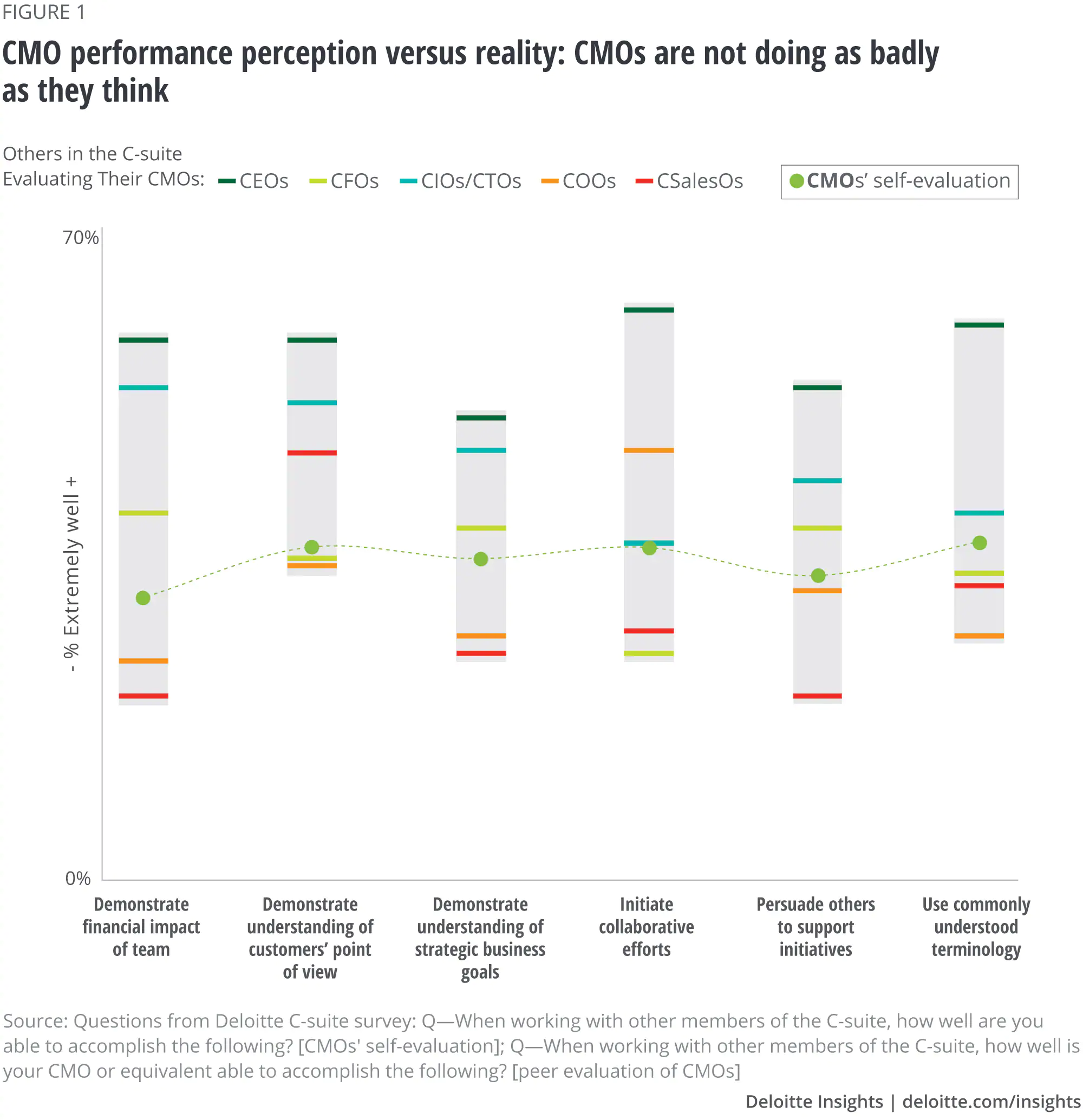
According to Deloitte Consulting, Many CMOs struggle to find a voice at the C-suite table. How can they elevate their influence and fully realize the role’s potential?
CMOs suffer from a crisis of confidence
CMOs are poised to wield considerable influence in the C-suite—and across their entire organizations. As digital technologies have changed the face of marketing—from creating innovative ways to connect with consumers to provide a wealth of customer data across every touchpoint—the role of the CMO has been significantly elevated.
Once largely responsible for brand and marketing campaign activity, CMOs today help drive customer experience and harness data-driven insights that can shape corporate strategy and impact financial performance. CEOs and other C-suite executives now expect CMOs to demonstrate how marketing drives growth and contribute to strategic business discussions. Yet, despite the elevation of the role and expectations of their C-suite peers, many CMOs face a crisis of confidence that is impairing their ability to fully engage with the C-suite and have a voice at the executive table, according to new Deloitte research.
The research, based on a survey and in-depth interviews with 575 Fortune 500 executives across the C-suite, examines how C-suite executives view CMOs’ contribution to corporate decision-making, why CMOs struggle to find their voice in the strategic conversations, and how they can achieve their place as enterprise-wide strategic leaders.
One of the most striking findings from the research is that CMOs are the least confident members of the C-suite—a harsh assessment they give themselves. Only 5 percent of CMOs in the study consider themselves high performers in their ability to impact strategic decision-making, contribute to the overall direction of the business, and garner support among their peers for their initiatives. Compare this with 55 percent of CEOs who consider themselves high performers. This lack of confidence may be more perception than reality, however. While CMOs’ self-reported assessment is quite low, most C-suite members think their CMO is performing at a higher level than they see themselves.


Based on the research, CMOs can consider three recommendations to help break the low confidence cycle and increase their influence in the C-suite:
1. Give yourself permission: CEOs give CMOs the highest marks for performance among all C-suite peers assessing the CMO. To boost their self-confidence, CMOs should give themselves permission to ask questions, get involved outside their traditional scope, and actively contribute to conversations with peers.
2. Lead the customer experience conversation: CMOs are not seen as leading the customer experience conversation; only 11 percent of C-suite executives perceive the CMO as leading the conversation, while 48 percent see the chief sales officer (CSO) in that role. CMOs should become the C-suite’s go-to person on customer experience, even if direct responsibility may lie in other areas of the organization.
3. Be the first to connect: CMOs are missing opportunities for cross-functional collaboration in the C-suite. Only 17 percent of C-suite execs report having collaborated with CMOs over the past 12 months, while 47 percent report having collaborated with COOs during this time period. CMOs can build confidence to speak up in the C-suite by connecting and collaborating with their C-suite peers.
These findings point to significant opportunities for CMOs to more clearly define their role as customer experience champion, forge closer relationships with other C-suite executives, and take more risks as leaders. Rather than waiting for others to define their role—or playing it safe sticking to familiar roles—CMOs should embrace the opportunity for growth and be brave about stepping into unfamiliar territory. By doing so, CMOs can gain more confidence and take their rightful place as strategic leaders in the C-suite.